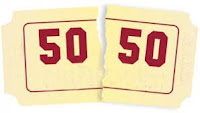On to the numbers. Annual attendances are significantly up thanks to two exhibitions: that war again and Air NZ's PR version of its history. Watch out for more of these soft sell corporate initiatives. One result of the war and flying guy thing was an increase of over 10 percent in the proportion of male visitors over last year.
Rather uncharitably there is no mention in the CE’s introduction of his predecessor who pushed the year’s figures up by a massive 21 percent over the previous year. His ghost will haunt the current year's figures too.
The ethnic mix of Te Papa’s visitors remains much the same with Europeans creeping up a percentage point to 79 percent (they are only around 63 percent of the NZ population). One big shift was a drop of 50 percent in Pacific peoples attending Te Papa over the last year. As with Maori attendances, these audiences are highly responsive to specific exhibitions and events of interest to them.
Some good news on attracting younger audiences, on the other hand, with visitors between the ages of 16 to 34 up 13 percent.
And what have the art people been up to? Not that much. Work from the collection has been rehung a couple of times but there have been no catalogued exhibitions.
Contemporary art is mentioned once in the Annual Report and the word ‘art’ 21 times (the same number as the word 'Gallipoli'). Oddly, Te Papa’s new buzz-word ‘digital’ only appears nine times.
Purchases of contemporary and modern art: don’t hold your breath (full list here)
Historical NZ Art: a Fred Taylor, a D K Richmond and the two million dollar William Strutt.
NZ contemporary photography: the usual suspects (full list here)
International art: a couple of prints and a painting by John Quincy Adams
As for the research undertaken by the art curators: nine peer group research articles, eight of them on art pre 1950 and coins



































